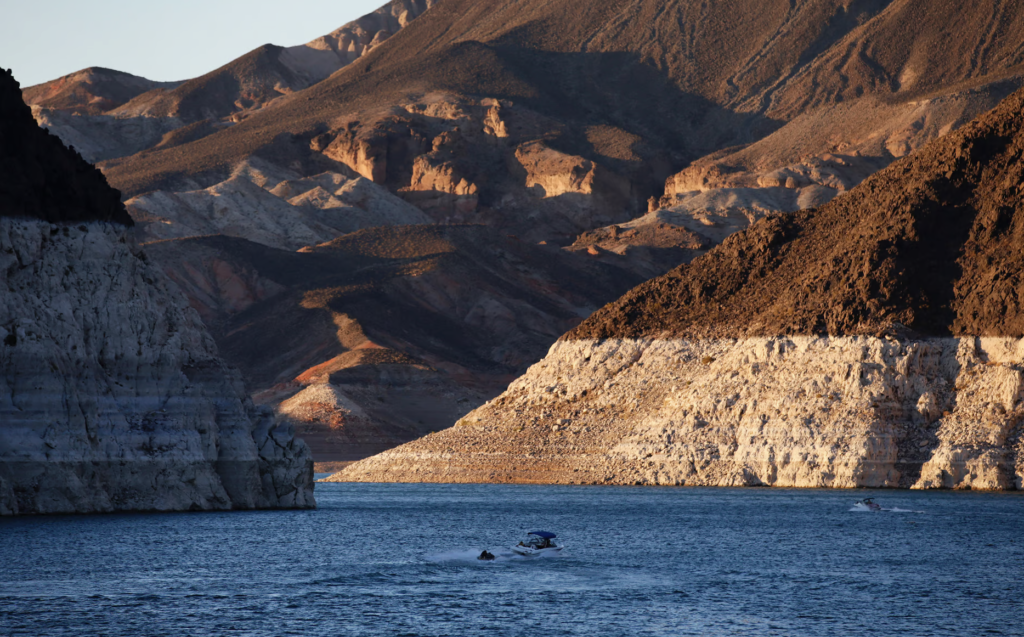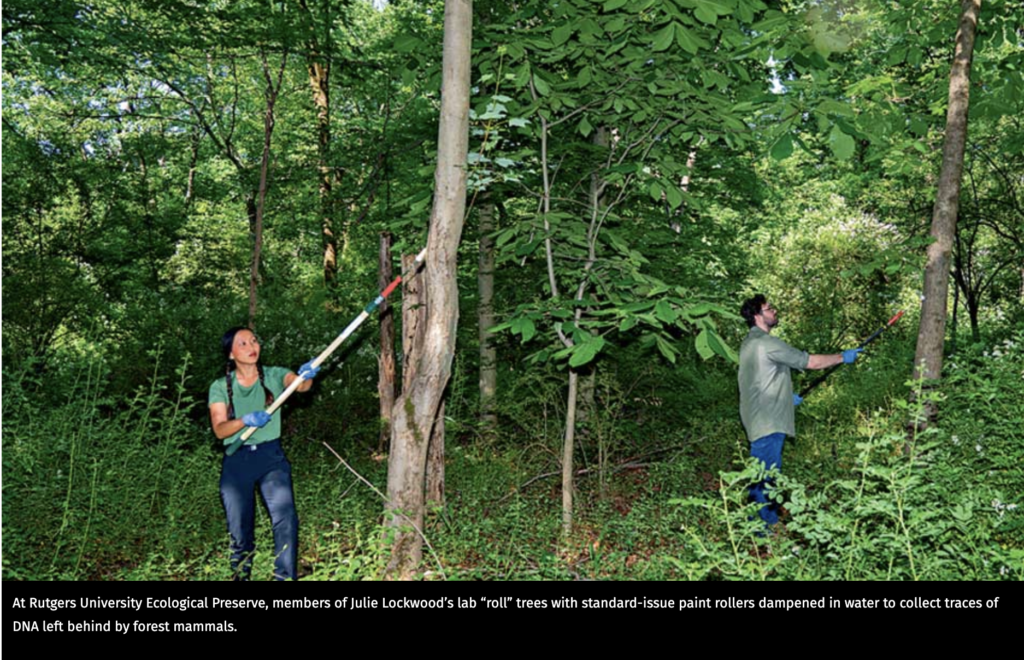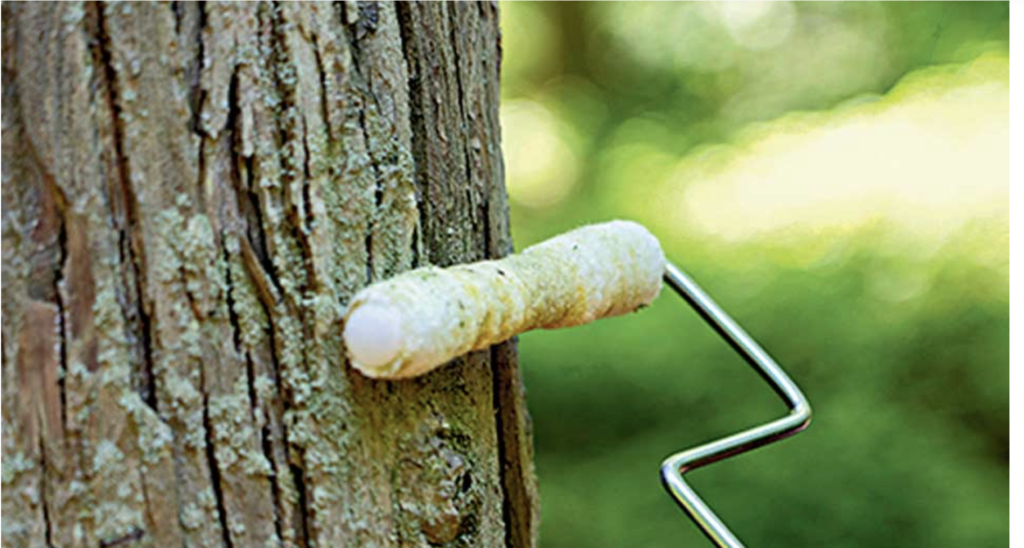Daniel Salzler No. 1276
EnviroInsight.org Four Items October 18, 2024
—————Feel Free To Pass This Along To Others——————
If your watershed is doing something you would like others to know about, or you know
of something others can benefit from, let me know and I will place it in this Information .
If you want to be removed from the distribution list, please let me know.
Please note that all meetings listed are open.
Enhance your viewing by downloading the pdf file to view photos, etc.
The attached is all about improving life in the watershed through knowledge.
If you want to be removed from the distribution list,
please let me know. Please note that all meetings listed are open.
Check our website at EnviroInsight.org
1. After Record Hot Summer, Arizona Drought Experts Fear Worsening Conditions
A dry monsoon season mixed with some of the hottest average temperatures in Arizona record has led to concerningly low soil moisture heading into the winter.

PHOENIX (CN) — Now 30 years into a historic drought, the Grand Canyon State dragged itself through the hottest and driest monsoon season on record this year, which one expert called “hellish conditions.”
Just a year after Phoenix experienced the hottest July of any U.S. city in modern history, its home state recorded the highest average heat and lowest precipitation levels of any June through September stretch on record.
“We’re not in very good shape,” Mark O’Malley said in the fourth quarterly meeting of the Arizona Drought Monitoring Technical Committee Tuesday afternoon.
O’Malley, southwestern Arizona regional coordinator for the National Weather Service, said he’s “very concerned” for conditions going into the winter, even in areas of the state that received average rainfall.
Monsoon season typically runs from June 15 to Sept. 30, but rainfall has been delayed to late July or as late as mid-August in recent years. June 2024 set the record for hottest June in Phoenix history, hovering at a daily mean temperature of 97 degrees Fahrenheit for 30 days — seven degrees hotter than the previous June.
While the average daily highs barely eclipsed those of June 2023, Arizona climatologist Erin Saffell said June 2024 was so much hotter on average because nighttime temperatures never cooled below 90 degrees.
Safell added that July 2024 was Arizona’s second hottest and 35th driest July on record.
The combination of historic drought and record heat, which postdoctoral research scholar Sonmath Mondal calls ”hotdroughts,” has severely reduced soil moisture across the state, even where rainfall hasn’t been as sparse.
“Evaporation is really becoming a problem for us,” O’Malley said. He said soil moisture is worst along the lower Colorado River and its watershed, where he’s recording the lowest streamflow in the past 25 years.
Mondal, research scholar from Arizona State University, told the committee that the drought should be viewed through the lens of heat, rather than as an independent entity, because one so heavily affects the other. In 2023, his research found that the heat wave was four times stronger than average conditions. He traced the so-called hotdrought back to Mexico.
“It seems like someone has put Mexico on fire, and that fire is spreading to the Four Corners states,” Mondal said.
He said the drought monitoring team can use heat wave data in Mexico and New Mexico to predict Arizona climate patterns up to two weeks in advance.
He said after the meeting that 2025 will only be worse.
“It will get very serious,” Mondal said on his way out of the conference room in the Arizona Department of Water Resources building. “Very serious.”
Despite the concerning data, there is some silver lining. Most of the Arizona Department of Water Resources’ drought monitoring wells, placed in five watersheds across the state, have increased water levels since the drought monitoring committee’s last meeting in July. Those wells are found along the Santa Cruz River and in Leslie Canyon. But despite the increase, water levels are still below the historical median, and have been since at least 2020.
Water levels in the Verde River and San Pedro River monitoring wells are at or near 100% capacity.
Heat is the deadliest weather element in Arizona, according to the National Weather Service. Between 2010 and 2020, the Grand Canyon State saw more than 3,000 heat-related deaths. Maricopa County recorded 425 heat-related deaths in 2022.
To prevent heat-related illness, the weather service recommends avoiding being outdoors. If necessary, drink one or two liters of water for every hour spent outside, and limit strenuous activity to the early mornings and late evenings. If a person becomes confused, dizzy or unconscious in the heat, call 911 immediately. The Maricopa County Health Department maintains a heat-relief map including cooling stations, hydration stations and donation sites for those who can’t escape the extreme heat. Source: Courthouse News Service
2. Gila River Indian Community Turns On Power For First Ever Solar-Over-Canal Project. The Gila River Indian Community celebrate a historic milestone in its work to provide solutions for water conservation and renewable energy by activating the first-ever solar-over-canal project in the country.

“The Gila River Indian Community is proud to be at the forefront of this groundbreaking solar-over-canal project, which not only generates renewable energy but also conserves our most precious resource — water,” Gila River Indian Community Gov. Stephen Roe Lewis said in a written statement.
The project spans over 2,700 linear feet of the Casa Blanca Canal, which is located along Interstate 10 near Sacaton.
The tribe said the project represents a groundbreaking solution to the intertwined crises of energy, water and climate change, specifically addressing the unique needs of the Gila River Indian Community, the State of Arizona, the southwest region and the Colorado River Basin.
“This project builds on the work of our ancestors, who found innovative ways to harness our water and natural resources throughout the generations,” Lewis said.
The Gila River Indian Community and the U.S. Army Corps of Engineers signed an agreement in 2023 to kick off the construction of the project, which is the first phase of the Pima-Maricopa Irrigation Project Renewable Energy Pilot Project.
The Gila River Indian Community held an event on Oct. 3 to commemorate activating the power of the solar project near Sacaton and hosted federal leadership: White House Senior Advisor and Assistant to the President Tom Perez, Bureau of Reclamation Deputy Commissioner David Palumbo and U.S. Rep. Greg Stanton.
The project is the first solar-over-canal initiative of its kind in the Western Hemisphere, according to the tribe, and it is setting a new standard for sustainable water and energy management.
“The Gila River Indian Community, known for its long-standing leadership in water conservation and irrigation innovation, continues to pave the way for cutting-edge solutions to the challenges of the 21st century,” the tribe stated.
The Casa-Blanca Canal Solar project is developed by the Pima-Maricopa Irrigation Project a department of the Gila River Indian Community and funding support from the Bureau of Reclamation.
The $5.6 million for the project came from President Joe Biden’s Investing in America Agenda. The tribe said the project was developed as part of the administration’s broader strategy to promote innovative renewable energy solutions and water conservation technologies.
“The Gila River Indian Community is a national leader in creating practical solutions to some of the most pressing environmental challenges we face today,” Perez said in a statement.
“This project serves as a model for communities across the country as the Administration continues to invest in America and work to build a sustainable, resilient future,” he added.
The tribe highlighted how the solar-over-canal project offers numerous environmental and operational benefits, including generating clean and renewable energy, reducing water evaporation from the canal, reducing maintenance requirements for the canal infrastructure, and contributing to the tribe’s goal of a carbon-neutral energy footprint.
The Gila River Indian Community announced that two additional phases of the project are planned, with funding and design work already in progress. The next phase involves work covering a larger portion of the irrigation system.
“Water savings here on Gila River Indian Community Land means savings for the entire Colorado River System – and in this drought, every acre-foot counts,” U.S. Rep. Greg Stanton said in a statement. “These projects show what’s possible with strong partnerships between the federal government, states and Tribal leaders.”
UPDATE: This story was updated with a comment from Greg Stanton Source: Shondlin
Silversmith, Oct 7, 2024 AZDaily Mirror
3. Following The Trail Of eDNA: Everything Lives A Trace. Environmental DNA, or eDNA, is helping scientists locate elusive wildlife—from rare and endangered species to emerging invasives.
A colleague in Julie Lockheart’s lab, first envisioned it : a supersized swab. Five years ago, Lockwood, a Rutgers University ecologist who often surveys habitat for elusive wildlife, was brainstorming with her team about a new search tool that would borrow from forensic crime scene investigations—but on a much larger scale. “We were honestly just sitting around at lunch and trying to come up with ways of sampling more terrestrial spaces.
Since then, Lockwood and her colleagues have honed a method called tree rolling. Using a standard-issue paint roller, slightly dampened with water, the researchers attach a long handle and roll its cylindrical nap along the bark and foliage of trees to swab for evidence of wildlife. The tool functions a bit like a lint roller, picking up the remnants of DNA that animals leave behind in the environment. (They’ve also used the tool to collect DNA from the surfaces of soil and wooden boards.)

Back at the lab, technicians rinse these DNA fragments off the rollers and use computers to analyze the results. In one study that surveyed 21 trees in two New Jersey oak-hickory forests,Lockwood says she and her team were able to estimate about 90 percent of the mammal species living in an area of more than 400 acres—all in a single day.
Long-term monitoring of forest-dwelling mammals is vital to their conservation, but traditional habitat assessment surveys can be both expensive and labor intensive. Even a single snapshot in time can require multiple methods: Motion-activated cameras may record bears, cougars and other large mammals; checking nighttime transects could reveal flying squirrels and other nocturnal animals dwelling in the canopy; and researchers deploy acoustic devices, such as LIDAR, to detect bats.
Yet in her New Jersey study, Lockwood gathered evidence of all these organisms at once by swabbing for traces of DNA. “One method, one way, done,” she says. Her results, published in 2023 in Scientific Reports, found evidence of 16 mammal species, including the southern flying squirrel, white-tailed deer and seven other species commonly seen in the region, as well as the endangered and rarely observed eastern small-footed bat.
Every living thing, it turns out, leaves a detectable trace. In recent years, researchers around the globe increasingly have been searching for and finding this so-called environmental DNA, or eDNA, in virtually any imaginable location. Indeed, within the last two decades, the fast-growing field has firmly established itself, with both a dedicated journal and a society that hosts annual meetings. Outside academia, state and federal agencies also have started using eDNA to monitor wildlife.
Beyond the technique’s convenience and relatively low cost, taking a sample—whether a tube full of water, soil, snow or air—requires little or no expertise. As Lockwood’s research suggests, analyses of such samples can pick up signs of wildlife covering a broad taxonomic range. And critical to scientists trying to find evidence of rare or endangered species, the noninvasive method does not involve physically capturing an organism in a trap, net or vacuum-powered bug collector, meaning it minimizes potential harm to vulnerable wildlife.

By rolling trees in a 400 acre forest, Lockwood’s term discovered eDNA evidence of 16 different mammal species. They completed their assessment in a single day
Environmental DNA does have its limits, of course. It provides, at best, suggestive evidence, and like the direct observation of wildlife, its results cannot authoritatively exclude the presence or absence of a species. The method also makes it difficult to assess health or measure population abundance—critical factors in managing and protecting wildlife. The field faces broader concerns as well, including the impact it has on researchers. As one marine biologist wrote in an editorial published in Nature, “The more time we spend analysing at the bench, not the beach, the less connected we are to the ecosystems we are trying to protect.”. Read more at https://www.nwf.org/Magazines/National-Wildlife/2024/Fall
4. Columbus Day Findings. This past Monday was the day when we, in the United States, celebrate Columbus Day. Since 1937, the US has marked today as a federal holiday.

Until recently, when DNA analysis confirmed that Christopher Columbus was a Sephardic Jew from Western Europe, a 22-year forensic investigation has found. The results, announced Saturday, intend to put to rest the centuries-old mystery of the explorer’s origins.
Theories surrounding Columbus’ background have ranged from him being Italian, Portuguese, Basque, Greek, or Spanish. A team from the University of Granada sought to settle the question by collecting DNA samples from one of Columbus’ suspected burial sites, Seville Cathedral. Researchers say they verified the samples against those of one of his brothers and his son, Hernando. The result indicates Columbus was a Sephardic Jew, with researchers positing he was born in the Spanish city of Valencia. Source: https://mail.aol.com/d/list/referrer=newMail&folders=1&accountIds =1&listFilter=NEWMAIL/messages/ACUmJhAQ7TrAZwzSHQXAqKZ156k
Copyright: 2024 EnviroInsight.org
“A people that values its privileges above its principles soon loses both.” Dwight D. Eisenhower
